- Administrator
- Albums and Singles
 This Sunroof! docking with satellite ecstatica continues Matthew Bower’s exploration into the brighter side of drone experimentation. This is one of the best places yet to begin to attempt to keep up with Bower’s worldview and schedule. Programmed as a single track yet built out of many chunks of separate jams and studio tinkering this continues the Sunroof! tradition of gorgeously excessive bliss up against a sense of playful freedom.
This Sunroof! docking with satellite ecstatica continues Matthew Bower’s exploration into the brighter side of drone experimentation. This is one of the best places yet to begin to attempt to keep up with Bower’s worldview and schedule. Programmed as a single track yet built out of many chunks of separate jams and studio tinkering this continues the Sunroof! tradition of gorgeously excessive bliss up against a sense of playful freedom.
Capturing the project’s playful melodic shine in smaller amounts allows for a newly realised appreciation. Instead of getting into (or out of) his ability to create ecstatic zone-out worlds it’s easier to see the intricacy and details in the construction of these pieces. These songs last long enough to suck me in, get me involved in actively enjoying / listening and then moving instantly into the next song. Since he doesn’t use any studio floor scraps there’s no musical short-changing here.
It’s the range of his musical reach within this seamless pulse that keeps this release at the top of the pile. Bower meets the expectations gleaned from his previous work and then peppers Splat! with elements that could’ve come from a fledging pop act a third of his age. It’s obvious that these steps aren’t a reaching out or an effort to catch the latest tsunami trend but a mind that moves more than just to the beat of drone. From great smudged rotating arcs of light through a garage stomp with high-end fuckery FX to a vocal slice of Fleetwood Mac’s mighty “Rhiannon” submerged in feathers of feedback. It’s tempting to go through every piece (the electro distorted stoner metal, power loops of broken bells, primary coloured rainbow splurges and flailing power cable piano thumps) to try and capture the feel of all the facets here. This is a mini-epic and a rival of any of Sunroof!s two disc releases.
samples:
Read More
- Administrator
- Albums and Singles
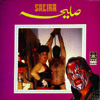 So much of what Jim O'Rourke does is impossible to predict. His music either entices or disgusts and typically fluctuates between radical experimental work and more conventional "pop" records. With Mats Gustafssen and Thurston Moore in tow the result is akin to mechanical ambience: music that's probably best left ignored, but that announces itself too powerfully to be placed in the background.
So much of what Jim O'Rourke does is impossible to predict. His music either entices or disgusts and typically fluctuates between radical experimental work and more conventional "pop" records. With Mats Gustafssen and Thurston Moore in tow the result is akin to mechanical ambience: music that's probably best left ignored, but that announces itself too powerfully to be placed in the background.
Load
The artwork is hard to avoid; it might be bondage, it might be a scene from some porn gone horribly awry. Thrust into the foreground is a wrestling star, face twisted into a growl and painted. The text on the cover is Indian, perhaps, but might just be nonsense. The reverse side reveals recording information, band name, and participants, but doesn't acknowledge exactly when and where these recordings were made and whether or not they were part of a live performance in front of an audience, or a live improv jam in the studio. From the get go, the record seems like a bit of a mess, something to be thrown out to a bored audience that needs one more noisy fix before their next obsession can be found. The music is as messy as the packaging - a strange mix of continuous guitar noise and painfully bland noise generated by God knows what. Pedals, laptops, keyboards, feedback loops, it could be anything, but that doesn't change the fact that the sound is horribly monochromatic 90% of the time.
The use of a sax doesn't change anything, either. Its continual wailing sounds about par next to the rumbling garbage spasms that constitute the rest of the record. That's only the first track, the second one starts promisingly with all sorts of warped tones colliding with one another, but the presence of a flatulent short circuit mingles with all the other softer tones for too long. Before I can even invest some time in paying attention to one sound or another, this trio shatters what they've constructed up to that point in favor of more randomly generated tones and waves of distortion. I'm not sure if this kind of improvisation could be that difficult, much of what I hear could've been generated on a single laptop with just a guitar and a contact microphone for input. On the other hand, there are some dynamic moments on the second piece that sound somewhat enjoyable. Those enjoyable moments just don't last long enough to be enjoyed.
This recording, then, is about exactly what the cover demonstrated from the start: pain and confusion. Laugh all you want because I'm deciding to return to something that seems so trivial, but the inclusion of sexual bondage and laughable anger on the cover have to relate to the contents somehow. This is the result of sexual frustration, a desire to re-enact portions of various macho films and to tear down whatever walls are keeping these three musicians from releasing better music. If so little care was put into this album, then I wonder why I'm using up any amount of energy in an effort to describe all its shortcomings. I suppose I expect better, especially from O'Rourke and Moore. I know they both love noise, I get it, I've heard enough to understand that noise must rule their world. But, does it all have to sound like exploding cows of copulating moose?
samples:
Read More
- Administrator
- Albums and Singles
 Tom Carter made a revealing statement in his Eye interview, claiming that Charalambides has always been a fairly direct band. Whether they sound mysterious or not, returning to their material with this in mind has been an eye opener. On Charalambides' latest record, the band sounds more confident than ever, directing their energy into a powerful piece of musicianship, passion, and vision. and also recording what happens to be their best album to date.
Tom Carter made a revealing statement in his Eye interview, claiming that Charalambides has always been a fairly direct band. Whether they sound mysterious or not, returning to their material with this in mind has been an eye opener. On Charalambides' latest record, the band sounds more confident than ever, directing their energy into a powerful piece of musicianship, passion, and vision. and also recording what happens to be their best album to date.
Tom Carter's interview was telling, a view from the musician's point of view that provided an insight rare in the digital era. With so many artists to pay attention to, he was capable of being both concise and informative. Though quiet at times, the band has a distinct power, one that both Tom and Christina Carter have made a conscious effort to expose. Simultaneously, the band emits a gauzy presence, both ethereal and firmly based in ideas and experiences everyone can appreciate. The band rides a line between mystical solitude and sure-footed potency. This facet of their music stands out specifically on A Vintage Burden. The band, now a duo, have stripped their music down. As Tom Carter explicated in his interview, the band has previously relied on processing and effects to mount an energetic attack on their audience. Their work on this album, however, sounds nearly acoustic in its opening moments and throughout the majority of the record.
Soft electric guitar floats through the air carelessly with Christina's beautiful, smooth, and powerful voice. Joy Shapes began somewhat caustically, sounding like the echoes of a banshee in its death throws. For the most part, that presentation stayed consistent throughout and that album still sounds haunted and illusory to me. A Vintage Burden is the opposite, a definite and moving record that has more in common with folk music than many may care to admit. Though the guitar work sounds largely improvisational, there is a more concrete structure to many of the songs, especially "Spring" and "Dormant Love." The chords sing joyously, announcing their presence undisturbed, reveling in the simplicity of the piece. If Tom Carter's words said anything to me, it is that Charalambides appreciate the power of clarity. It is clarity that wins me over on this record and singles it out as the single best collection of music I've heard from the band.
I'd hate to call this a pop record, but the first half of the album surely speaks of the duo's appreciation for song craft. They've melded their experimental and boisterous attitude with plainly stroked guitars and warped melodies that succeed more because of their directness, not because of their alienating aspects. Assuredly, Charalambides maintain a whimsical side to their work on this album, but instead of channeling it through abstract techniques and strange sounds, they simply work through songs, adding layers here and there in effective and careful ways. Every instrument finds a proper place on the record and then voices itself perfectly; the band neither understates nor overstates any of the sounds they utilize. Much of this album's appeal comes from how perfectly conceived it is. Melodies, harmonies, rhythms, and noise all weave in and out of one another like they were made to be positioned that way. Perhaps chance had more to do with some of these arrangements than I am aware of, but if that is the case then such a fact speaks volumes about how well Tom and Christina Carter play together. The circular melody that appears on the electric guitar in "Black Bed Blues" at approximately six minutes is astounding; it is a perfectly planned blend of old west cinematic flare and dusty European mystery. It sounds both familiar and foreign, a blend of American musicianship and exotic techniques that resonates perfectly with the mood A Vintage Burden establishes early on. Both "Black Bed Blues" and "Two Birds" run over 12 minutes long and together they compose more than half hour of this roughly 18 minute record. Their gravity is undeniable, their position on the record giving them a weight that suggests they are the most important pieces of this album. That they are surrounded by more conventional tunes merely suggests that the band is still experimenting with their ideas and adapting faithful techniques to new ones. To call "Two Birds" unusual, however, is to take away from the fact that some of the best guitar work I've heard from the band appears on this song. Despite its length, it resembles a song proper more than an exercise in stretching the dimensions of music. It may stretch and breathe more than conventional pop songs, but it never sounds unwelcome; constant attention is given to when and where sounds should appear and disappear and when they should peak violently or whisper reassuringly.
Power was a recurring theme in my head while listening to this record, the way that power sounds when wielded by the right hands. I suppose most anyone could make a powerful record by turning the volume up and maximizing their distortion to the point of reckless abandon, but Charalambides emphasize the power of their music by turning it down a bit and relying on more skillful factors. When a song begins, it grabs my attention immediately and refuses to let go, the weight of what it speaks manifested in the careful plucking of an acoustic guitar or the death moans of an electric six string stretching through the background. The live performances in the band's Eye episode revealed that being loud and being direct is as much about dynamics and silence as it is about being confrontational. To sum up everything I'm thinking about this record: it is the best thing Charalambides have done and it stands out as being their most direct, stripped down record to date. Their distorted, massive sound has not been replaced in the process, however. It has merely been evolved, shifted, and arranged into a new kind of beast. My heart's been stolen by A Vintage Burden and now more than ever I'm sure that Charalambides are one of the finest bands currently walking the planet. More from them could only mean more excellent and surprising music, not to mention more emotive and emotional work. Never have I heard the band sound so human and direct, but I'm happy they've decided to open themselves up on this record as it renders the music more personally touching.
samples:
Read More
- Administrator
- Albums and Singles
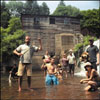 David Goodman was the bassist in the Boston band Lockgroove who was taken over and replaced by Dave Doom, traversed the northeast, gathering sounds and, unlike every academic sound gathering world traveler, has woven a fun and diverse pop/post-pop album instead of some boring bit of stuffy nonsense. Munchy the Bear is one of the most fresh and original debut albums I've ever heard.
David Goodman was the bassist in the Boston band Lockgroove who was taken over and replaced by Dave Doom, traversed the northeast, gathering sounds and, unlike every academic sound gathering world traveler, has woven a fun and diverse pop/post-pop album instead of some boring bit of stuffy nonsense. Munchy the Bear is one of the most fresh and original debut albums I've ever heard.
For an album that has been years in the making, Munchy the Bear wastes no time launching with three glorious songs. The happy singalong tune of "Never Live Forever" is something which could easily make any Caribou/Manitoba fan wet: it's infectious, has a moderate amount of unconventional sampling, and is heavy on the drums. Dave Doom flexes his multi-instrumental talented muscles with dulcimer playing on "All the Experiences," a somewhat tribute to George Harrison, while groovy breakbeat drums and cut up melodies come in on the instrumental "Stick Pots and the Bloody Beats," providing pulse to a fantastic echoing guitar riff.
One of the neat things about this record is in such a tiny digipack inlet, Doom has managed to give props to the people and places and thoughts that shaped ach song on the record, providing a backstory to the dense audio tapestry. He's not just giving a tracklist of somewhat obscure song titles of inside jokes.
The next few tunes remind me of the definition of "chimp rock": rock music categorically void of aspirations of pop stardom; but it hardly sounds like anything Sebadoh or The Shaggs would dream up. Doom detunes guitars, samples kids songs, and sings distorted through megaphones, but he keeps things consistently on the beat, matching them with peppy drums and happy melodies, bringing in friends to sing, play, and play. Identified instruments include bajo, piano, organs, harp, bongos, and even vocals sung into cell phone voice mail. An array of friends has even been captured in the cover, which, at first seems pretty harmless but a closer look at weapons in peoples' hands like an axe, machetes, and a shovel suggest a cast of a teenage summer camp horror flick.
Mellower moments come towards the end of the recording, interspersed with a few transitionary type bits under 60 seconds. "Beauty and Addiction" is a subdued song with subtle drums, melodica sounds, and somewhat odd samples of old films talking about nuclear war, "A Cult Following" features a chorus of people and a snappy sax, and the 10+ minute closer "Never Want to Leave" is like a roadside lullaby, as the waves recorded sound dangerously close to traffic.
With such a strong record like this finally surfacing after five years from its inception, it leads me to wonder how on earth Dave Doom will pull off anything else in the foreseeable future, but thankfully something like this is one of those records that has the potential to catch on big, give it time.
samples:
Read More
- Administrator
- Albums and Singles
 Jonas Munk is a talented musician, producer, and texturalist. As Manual, his recordings are warm, the guitar hums are deep, and the sounds of waves and wind chimes are dreamy and picturesque like a summer day on the beach with the hot sun beating down and a cool, cleansing sea breeze gently passing through. All it needs, however is a hook.
Jonas Munk is a talented musician, producer, and texturalist. As Manual, his recordings are warm, the guitar hums are deep, and the sounds of waves and wind chimes are dreamy and picturesque like a summer day on the beach with the hot sun beating down and a cool, cleansing sea breeze gently passing through. All it needs, however is a hook.
Although I enjoy his latest album I feel I've heard it before. Almost like a continuation of The North Shore, Munk's using the same chords he's comfortable with, there are no beats, no drums, and no rhythms, just the wash of finely processed guitars with sound effects layered on top. What makes Bajamar different is that it is more patient than the other Manual albums: it has a brief intro and outro with three +10 minute pieces in the center which take their time evolving and flowing. I actually prefer this over the releases with 10 or more songs that are shorter and less developed.
"Celebration" is the first full song to appear. Snyth and vocal samples washing over a continuous guitar tinkling which would be the sound light makes when reflecting off the water. "Reminiscence," on the other hand, actually includes water recordings over more muted drones, while the stringed instruments in the 15+ minute "September Swell" echo as wind chimes and quiet percussive sounds shudder softly over. The closing "La Torche" is like a coda to "September Swell," as it starts without any defining beginning point, and while it features a more prominent, Cocteau Twins-like rhthmic guitar tune, it uses some of the same sounds carried over from "September Swell."
While these songs are nice, to be honest, I'd expect to find any one of them to play the role of an incidental piece: transitionary songs to be sandwiched in between those far more grand and involved. There isn't much challenging nor exciting enough to attract me back like moments on Ascend or Until Tomorrow had. My longing for a lead instrument reminds me, too, that the more I hear from Manual, the more I ache for another Limp recording to surface. It's clear that Jonas Munk is building brand recognition with the covers and the sound, but it's all sounding and looking alike at this point.
samples:
Read More
- Administrator
- Albums and Singles
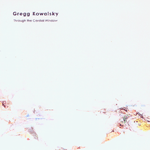 Electro-acoustic ventures will either sound warm, welcoming, and exciting from the start or they will be colder and less appealing. Cold, approximated experiments often yield the latter for me, drawing more yawns than squeals of excitement. Gregg Kowalsky's effort is a balance between auditory masturbation and consistent hammering; if the music doesn't yield to his desires, Kowalsky just tries to pound it into happy submission.
Electro-acoustic ventures will either sound warm, welcoming, and exciting from the start or they will be colder and less appealing. Cold, approximated experiments often yield the latter for me, drawing more yawns than squeals of excitement. Gregg Kowalsky's effort is a balance between auditory masturbation and consistent hammering; if the music doesn't yield to his desires, Kowalsky just tries to pound it into happy submission.
Kranky
To the extent that most strange recording techniques have become familiarized and assimilated into common nomenclature, there isn't much new that Kowalsky can offer. Flatulence and sexual intercourse have both been utilized as sources for musical material, mathematics and deliberate chance have both had their say in the arrangement and construction of many musical pieces, and musicians have traveled to many remote locations in order to inject their work with the spirit of whatever locale they happened to like that year; truly innovative recording techniques are either difficult to come by or too difficult to understand for the every day listener. Thus Kowalsky's interesting recording techniques might fail to draw listeners in the same way that Nurse with Wound's or Coil's rather well-known and strange procedures have. All we're left with is Kowalsky's arid compositions, stretching out over 45 minutes and seven tracks. As far as drone goes, there's almost no distinction between Kowalsky's work and many other great drone composers; Kowalsky's work actually pretends to move less than a piece from someone like Colin Potter. Kowalsky simply introduces sounds at the beginning of each piece and then adds to them, failing to provide any sense of progression in the original tones. Thus, as a piece moves forward by way of layering, it also retains some sense of rest or inactivity. When the sounds are interesting and intriguing in and of themselves (like they are on "Coral Gables"), the effect is soothing and joyful. At times I never wanted that particular track to stop. When the music is slow going and sounds reminiscent of drab laboratories, then the desire to press the skip button on the CD player is all-consuming.
So, as the album progresses, there is a frustrating oscillation between captivation and sheer boredom. Listening to a composer like Keith Fullerton Whitman or Carl Stone typically involves constant hypnosis; their music is simultaneously academic and entertaining. On the other hand, listening to a poor album from any number of noise makers instigates an instant case of dry mouth without the desired high. Kowalsky falls flatly in the middle of these two extremes. Four of the seven tracks leave an impression on me, bewilderingly denying their length because of the beauty with which they resonate. The remaining tracks nearly ruin the album, especially because two of them are present on the first half of Through the Cardial Window.
This is, then, an imperfect record with qualities to be enjoyed and appreciated. Expect nothing more than drone-like material; patterns, ideas, and tones stretched out over eternity, with only the slightest hint of action. The entire record has an airy quality that places it in the firmament, with few terrestrial characteristics to ruin that notion. This album floats more than it grinds and it behaves predictably, with few surprises to be found anywhere. Perhaps this is simply what a normal, average drone record sounds like or perhaps this is the effort of a composer who wasn't quite sure how to move from one idea to the next. Whatever the case may be, it's difficult to fully endorse this record as anything more than decent. A little extra movement and a more definite attitude towards progression would've made this record far more exciting. Right now, I have it on in the background and am completely happy with ignoring the majority of it while watching the rain. This is ambient music in the truest sense, made for background play with nothing shocking or impressive enough to interrupt a calm space.
samples:
Read More
- Administrator
- Albums and Singles
 With this release, the Numero Group has managed to achieve perfection. The music consists of 14 songs by as many artists, all folky females, whose homemade records were so limited that it’s a miracle that somebody was able to compile this many gems in one place. The crowning achievement for Numero is that they finally included in their deluxe booklet a page devoted to each artist with an accompanying image.
With this release, the Numero Group has managed to achieve perfection. The music consists of 14 songs by as many artists, all folky females, whose homemade records were so limited that it’s a miracle that somebody was able to compile this many gems in one place. The crowning achievement for Numero is that they finally included in their deluxe booklet a page devoted to each artist with an accompanying image.
This collection reminds me of the No Watches.No Maps compilation released by Fat Cat back in 2001: it featured very good songs by acts who were rejected by the label for record deals. (It’s too bad in some cases as Fat Cat has since released a lot worse recordings by artists they did sign.) Many of these women had been known to send demos to folk-friendly independent and major labels, but none were ever picked up and very few continued to record much after their album noted here.
The production is simple, the instrumentation is small, and most often is only a voice accompanied by either a single guitar or single piano. The “MSG of sound recording” (delay on the voice) is all over this record, but it adds a certain creepy, haunting aesthetic to what was probably not intentional. Matching the eeriness of the music is the fates that seem to follow the artists. Jennie Perl’s “Maybe In Another Year” is one of those striking numbers, featuring only a tinkling piano behind the 16 year old’s voice, Perl’s current whereabouts are currently unknown. The following “Dedication” by Mary Perrin is another spooky one: a strong acoustic guitar gem, her vocal melody is almost Braizlian, it’s no wonder Perrin moved from her little town of Peoria Illinois to Los Angeles to pursue her music biz dreams (she died in 2003 in her sleep at 53). Ginny Reilly and David Maloney sound uncomfortably close to a precursor for Mazzy Star and Hope Sandoval solo material with their song “Wildman,” the duo, however, went on to record seven albums and known to still pair up and record together irregularly.
The inclusion of album covers is a fantastic addition, especially examples like Caroline Peyton’s cover for her album Mock Up, which was apparently done by the pressing plant’s janitor and Marj Snyder’s Let the Son Shine, which was allegedly designed to represent creation (with Marj oddly in the center). A lot of the artists here are young and primarily faith-based, like Becky Severson’s 59-second “A Special Path,” based on Jeremiah 6:16, which was the last recording she made (at the young age of 19); Judy Kelly’s “Window,” written for a friend’s wedding, and Linda Rich, who was discovered at a Inter-Varsity Missionary Conference in Urbana, Illinois.
Remastered again by Jeff Lipton, only a couple recordings suffer from degeneration, but for the most part the fidelity is strong and vivid. The arrangement is well done and not overdone, and at 47 minutes, it makes for a fantastic listen start to finish.
samples:
Read More
- Administrator
- Albums and Singles
 Deep City was birthed in academia, with its founders being various teachers and administrators in the Miami-Dade public school system. Like a number of record labels, Deep City had a house band, who would back various singers and soloists. For their house band, the Deep City crew had the brilliant idea to use Florida A&M University’s pep band!
Deep City was birthed in academia, with its founders being various teachers and administrators in the Miami-Dade public school system. Like a number of record labels, Deep City had a house band, who would back various singers and soloists. For their house band, the Deep City crew had the brilliant idea to use Florida A&M University’s pep band!
While the early hits produced from this team were Motown carbon copies, the gems here are clearly the bluesy classic R&B songs buried often in the B-Sides. “I Am Controlled by Your Love” by Helene Smith was chosen to be the compilation’s first appearance of what has been considered Miami’s first lady of soul. It backed the spritely “Baby Love” rip-off “Thrills and Chills,” which actually proved to be a major regional hit for Smith and Deep City’s precursor, Clarence Reid’s Reid label. The Motown miming didn’t end there, as Paul Kelly’s “It’s My Baby” is almost a note-for-note version of the Temptations’ “My Girl.”
The collection also features the powerful crooning of the Moovers, which shines on cuts like “Someone to Fulfill My Needs” and “Darling I’ll Go,” while their other two songs “Darling I’ll Go” and “One Little Dance” once again echo the Motown sound. Reid and Clarke were also responsible for discovering the young singers Freida Ray (a 16 year old record store clerk with a bouncy energy felt on her song with the Rocketeers, “Stay Away from My Johnny”) and Betty Wright, a contest winner, discovered at 12, who fronts the two songs “Good Lovin’” and the powerful “Paralyzed,” with the backing vocals of her older sister and Helene Smith.
The demise of the Deep City label came in 1968, only a few years after its launch. Their operation ceased due to dissention in the ranks: the musicians and producers leaving for greener pastures (one going on to win a Grammy in the 1970s) while some of the founders and operators either remained or went back to their day jobs in the school system. Once again, Jeff Lipton’s remastering has brought a number of these songs back to life, and has included the proverbial “bonus cut” of a recording deteriorated beyond the point of repair but good enough not to be ignored. In a similar way, the Deep City label is like that bonus cut: while it’s not essential to the story (the history of soul music in this case), it’s good enough to not be ignored.
samples:
- Helene Smith - I Am Controlled By Your Love
- Betty Wright - Paralyzed
- Moovers - Someone to Fulfill My Needs
Read More
- Administrator
- Albums and Singles
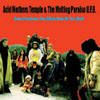 After almost two years and another incarnation of the band, the Melting Paraiso U.F.O. returns with a tour and a new album. I was wary upon hearing of the reformation if only because the group had showed signs of fatigue since the departure of Cotton Casino. However, it seems that the time off has served them well. Not only is this album a welcome return to form, but also some of the tracks exceed this incarnation’s past accomplishments, rivaling their past output with stylistic variations that haven’t been heard in years.
After almost two years and another incarnation of the band, the Melting Paraiso U.F.O. returns with a tour and a new album. I was wary upon hearing of the reformation if only because the group had showed signs of fatigue since the departure of Cotton Casino. However, it seems that the time off has served them well. Not only is this album a welcome return to form, but also some of the tracks exceed this incarnation’s past accomplishments, rivaling their past output with stylistic variations that haven’t been heard in years.
The beginning swells and builds tension before launching into “Attack From Planet Hattifatteners,” the sort of guitar assault I’ve come to expect from the group, though this one has some additional noises that add uncommon texture, especially to the ending. The next couple of songs change gears with the addition of an acoustic guitar, flutes, and vocals, which themselves are infrequent throughout the band's back catalog but are a welcome change. “Buy the Moon of Jupiter” is a rare Acid Mothers ballad while “Asimo’s Naked Breakfast: Rice and Shrine” features group chanting in addition to the lone singer. “I Wanna Be Your Bicycle Saddle,” a cacophonous shredded guitar din, shows surprising restraint in its length, which at a minute and a half is likely the shortest Acid Mothers song ever. “Interplanetary Love,” appropriately enough, contains genuinely beautiful moments with its singer supported by an acoustic guitar, drones, and mild oscillating effects. Of course it wouldn’t be an Acid Mothers album without an epic, and “The Tales of Solar Sail—Dark Stars in the Dazzling Sky” is also the new long-form song added to their recent live set list. As far as their epics go, this is one for the upper tier. They use a riff based on a non-Western scale as their launching point and proceed to mesmerize. It was the highlight of the live show I attended, and is certainly a welcome addition to the album.
Although their new U.S. tour found their live show to be similar to those of the past with only a few long songs in rotation, this release has a variety of songs not heard since Absolutely Freak Out (Zap Your Mind!!) or even New Geocentric World. Not only did this album assuage my doubts about the return of the Melting Paraiso U.F.O., it made me optimistic about their future.
samples:
Read More
- Administrator
- Albums and Singles
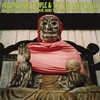 As the sticker on the cover warns, this version of Acid Mothers Temple is neither The Melting Paraiso U.F.O. nor The Cosmic Inferno. In fact, this is the first Acid Mothers Temple album without the group’s founder Kawabata Makoto in the line-up. Rather, this is a new band altogether formed by Magic Aum Gigi, who has appeared on a few previous Acid Mothers albums, and includes two other musicians to complete the “punk blues” trio. I was particularly interested in what a non-Makoto Acid Mothers album would sound like, and ultimately learned how much his presence adds.
As the sticker on the cover warns, this version of Acid Mothers Temple is neither The Melting Paraiso U.F.O. nor The Cosmic Inferno. In fact, this is the first Acid Mothers Temple album without the group’s founder Kawabata Makoto in the line-up. Rather, this is a new band altogether formed by Magic Aum Gigi, who has appeared on a few previous Acid Mothers albums, and includes two other musicians to complete the “punk blues” trio. I was particularly interested in what a non-Makoto Acid Mothers album would sound like, and ultimately learned how much his presence adds.
Starting the album is “Sandoza Death Blues,” a monolithic blues riff beaten into the ground quite early on. Unfortunately this lasts for almost twenty minutes without enough variation to make it worthwhile. Making things worse, at several times during the track there are abrupt pauses of a second or two that I initially attributed to a faulty CD player or a manufacturing glitch, but in fact turned out to be intentional as the music starts up again, albeit slightly differently. Had these pauses been edited out, or even better, had these minimal changes been incorporated into the songwriting, the results would fare better.
Although it had gotten off to a bad start, I wasn’t yet ready to write off the project completely. And I’m glad I didn’t, because the next few tracks are pretty enjoyable. “The Tale of the Garden of Sandoza” is a brief, mostly atmospheric piece composed of a harmonica, light cymbals, and ambient guitar. “Rock on Brain” doesn’t really rock, but instead entertains with trippy effects. Likewise, “Acid Mothers Rock‘N’Roll” is much mellower than I expected from the title, but is well executed and is probably my favorite song on the album. Things were looking up until I got to “Freaks Your Mind & Your LSD Piss Will Follow,” a nearly 30-minute slab of indulgence that is ultimately the album’s undoing. There’s a nice section about two-thirds into the song, but it’s surrounded on both sides by noodling feedback and cymbals, as well as the name of the song oft-repeated as a mantra. “La Bas” ends the album nicely with distorted guitar playing that’s eventually joined by two voices, but it’s too little, too late.
I was genuinely looking forward to a new form of Acid Mothers Temple, but I was ultimately disappointed. Which is too bad because with some generous editing, this could have been a decent effort but instead has a couple of glaring potholes.
samples:
Read More
- Administrator
- Albums and Singles
 Sounding like a rock band that wants to score the next David Lynch movie, Orbit Service craft a handful of songs that start promisingly, but only lead to disappointment. The marriage of science fiction, psychedelic drugs, and grim detective story that composes most Songs of Eta Carinae is bled dry of any tension and meaning half through the record and by then the music has become an endurance test instead of an entertaining listen.
Sounding like a rock band that wants to score the next David Lynch movie, Orbit Service craft a handful of songs that start promisingly, but only lead to disappointment. The marriage of science fiction, psychedelic drugs, and grim detective story that composes most Songs of Eta Carinae is bled dry of any tension and meaning half through the record and by then the music has become an endurance test instead of an entertaining listen.
Beta-lactam Ring
A black, red, and grey cover spells out the mood that Orbit Service is going to paint over the course of this disc's near hour duration. There will be no happiness around the corner, no spot of sunshine splashing any of the guitars, and any synthesizers used will surely recall gothic fantasy more than happy experiment. Gothic describes some of the record, in fact, with the band drawing heavily on the appeal of moody atmosphere over consistent writing. While the first few tracks that open the record start with song structures in mind, by the half way point of many of them some of the music begins to sound dull, floating instead of propelling. Guitars moan and jiggle behind a haze of smoke at every turn and semi-menacing drones buzz further in the distance. Impending doom seems to be a musical theme on Songs of Eta Carinae, but the doom is never delivered. Instead songs just fizzle out so that new sets of sound can be introduced and then pointlessly ejected in a vacuum of silence.
There are some catchy moments on the record and the vocal delivery is a satisfying medium between flamboyantly dramatic and considerate understatement. But as the album moves forward the constant wall of sound the band builds begins to become annoying and the lyrics get lost in the overwrought production and obsessively dense arrangements. The eleven minute "Asphyxia" stands out as the finest song on the record. Orbit Service take a mulling bass line and let it rumble coolly beneath a storm of worm-like synthetic effects and a steady drum beat. Parts of it remind me of some of Portishead's more chaotic moments, but Orbit Service take the music in a far more cacophonic direction. It's a wonderful song that highlights what's so unsatisfying about the rest of the album. A little more breathing room could've made Songs for Eta Carinae much more entertaining, but due to the constant assault of consistently rubbery and/or muddled instrumentation, the album sounds far too packed. Details get lost in all the sound and eventually I just lose my interest, knowing full well I won't be able to pick out much more than a few intriguing moments. It sounds like the band has plenty of creative energy, but without being able to hear what they're doing behind that giant wall of sound, I feel like that energy is wasted.
On the bright side, the band has the only vocalist with a breathy, dramatic quality that doesn't completely turn me off. In fact, the vocals are very attractive, molded in the shadow of longing wails and softly spoken revelations. Next time the band should let their instruments sparkle and match the quality of that voice, instead of leaving them for dead behind effects pedals.
samples:
Read More

